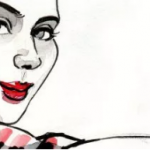The trigger points in the neck can cause dizziness and vertigo that many people experience with fibromyalgia. These trigger points can disrupt your perception and sense of balance, causing you to drop things or stumble and trip over things. Many symptoms of head and neck, ears, eyes, nose and throat may be due to trigger points in the neck. In this publication I will explain: where are these trigger points, which cause symptoms and how they can treat themselves.
What are the trigger points?
In simple terms, a trigger point is a knot that forms in the muscle and sends pain to other parts of the body. Activation points ensure that the muscle becomes tighter and shorter. When the muscles shorten, they can not pass through the full range of motion, changing the way they move, sit or stand. This leads to problems with strength and flexibility, resulting in more activation points.
The research suggests that the pain of fibromyalgia is mainly due to myofascial trigger points. Therefore, the treatment of trigger points will help to control the pain associated with fibromyalgia.
Trigger points in the neck that cause dizziness

The trigger points in the neck that can cause dizziness in the sternocleidomastoid muscles (SCM). The SCM is a large muscle along the front on both sides of the neck. It is composed of two interconnected muscle bands. These muscle bands start from the mastoid bone behind the ear. One band connects with the breastbone (sternum) and the other connects with the collarbone (collarbone). The sternal band is located at the top of the clavicle band.
The most important functions of the SCM muscles are to turn the head back and forth and bend the head downwards. The sternocleidomastoid also helps to maintain a stable position of the head during other movements of the body. Any position where the neck is held in an awkward position can create trigger points.
Another function of the SCM muscle is to lift the sternum when you breathe. The muscle can be overloaded if it breathes with the chest, rather than with the diaphragm. The SCM also helps to chew and swallow.
Symptoms of trigger points for sternocleidomastoids
The effects of sternocleidomastoid trigger points can be surprisingly widespread. Symptoms made by SCM trigger points include:
- dizziness, dizziness and imbalance
- blurred vision, double vision, excessive rupture, redness of the eyes, drooping eyelid and eye contractions
- hearing loss, tinnitus (humming, buzzing or tinnitus)
- migraine headache, sinus headache
- nausea
- sinuscongestie of sinusdrainage
- chronic cough, sore throat
- stiff neck
- cold sweat on his forehead
- continuous hay fever or cold symptoms
- difficulty swallowing
What causes sternocleidomastoid trigger points?
Activation points can be created by postures that hold the SCM contracted to hold the head in place, for example by watching or driving a computer screen. Keep your head turned to the side or keep your head back to watch for a long time will certainly cause problems. Breathing the chest instead of the abdomen can also overload the SCM muscle.
Here is a list of activities that SCM trigger points can create:
- General activities
- Keep the head to one side
- Posture of the head forward
- Holding the phone with the shoulder
- Stomach sleep
- Heavy lifting
- Fall and whip
- A short leg or scoliosis or an uncomfortable posture
- Stress and muscle tension
- Chronic cough or asthma
- Borstademhaling
Sternocleidomastoid trigger point delivery
 SCM trigger points are easy to handle yourself. The SCM muscle group can contain seven trigger points. The sternal distribution usually has 3-4 trigger points spaced apart along the length, while the division of the collarbone has 2-3 trigger points.
SCM trigger points are easy to handle yourself. The SCM muscle group can contain seven trigger points. The sternal distribution usually has 3-4 trigger points spaced apart along the length, while the division of the collarbone has 2-3 trigger points.
NEVER massage a wrist . If you pinch the sternocleidomastoid, instead of pressing it against the side of the neck, it stays away from the blood vessels.
Follow these steps to release the SCM trigger points:
- While looking into a mirror, turn your head to the side. You will see the sternal branch.
- Grasp the muscle with your thumb and fingers bent in a C-shape and turn your head back to look in the mirror.
- Keep your face forward, tilt your head slightly down and to the same side that you massage.
- Press hard enough to feel comfortable and try to distinguish between the two branches. Each branch is almost as big as your index finger. If you pay attention, you should be able to feel them separately.
- Milk the muscle up and down with short repeated movements, start in the middle and move to the back of the ear and then to the collarbone.
- If you find a spot that hurts, gently squeeze the trigger point. Lower the pressure until you feel no pain. If you are below the pain threshold, increase the pressure slowly for 60-90 seconds.
Do this on both sides, a few times a day. Be simple at the beginning and work at a pressure level that feels right for you.


